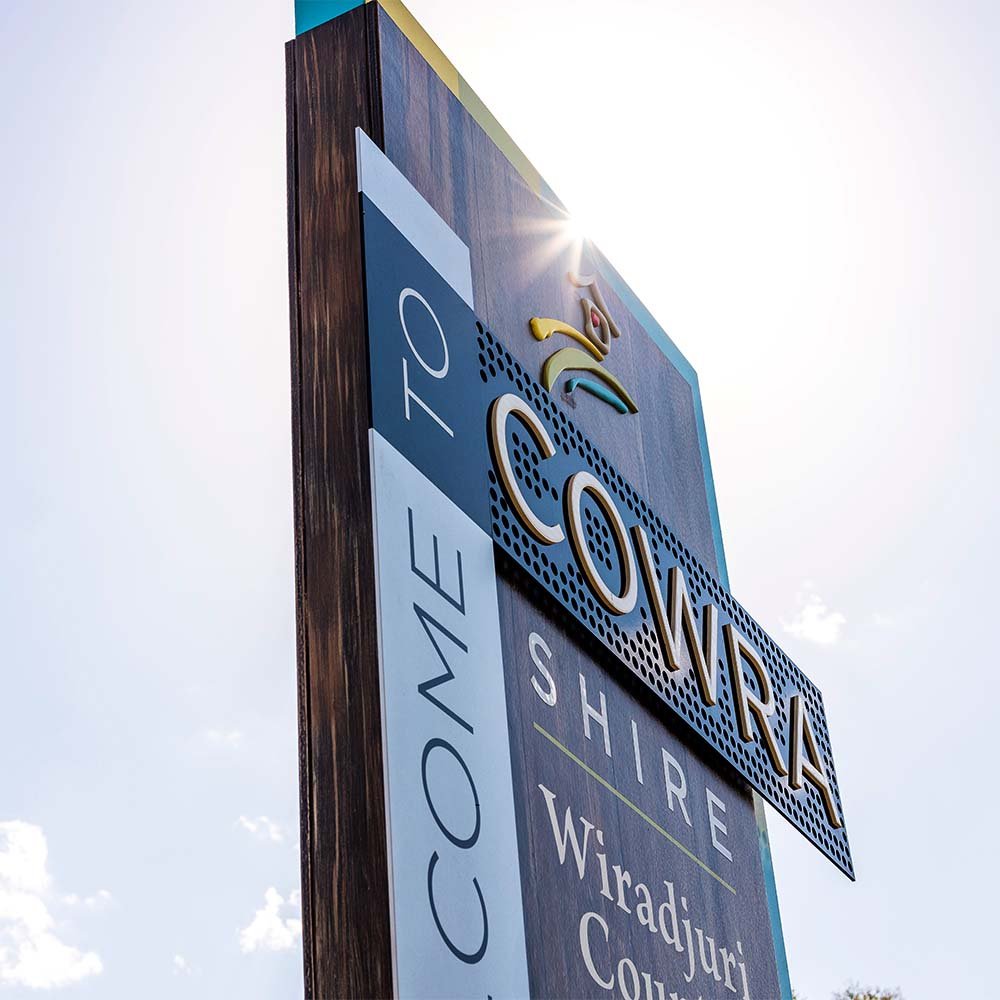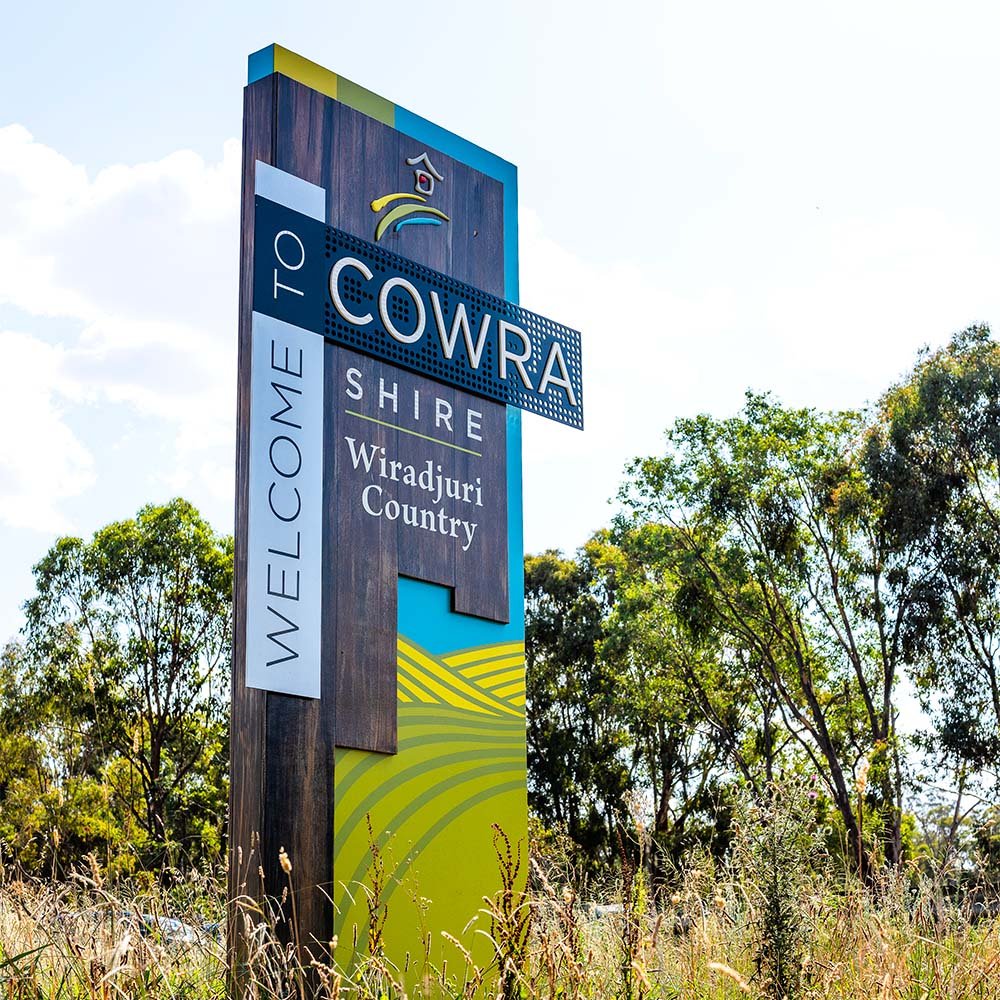 Image 1 of 6
Image 1 of 6

 Image 2 of 6
Image 2 of 6

 Image 3 of 6
Image 3 of 6

 Image 4 of 6
Image 4 of 6

 Image 5 of 6
Image 5 of 6

 Image 6 of 6
Image 6 of 6







Cowra Shire Council Entry Signs
Cowra Shire Council commissioned a set of shire boundary signs to welcome visitors into the region. The design harmonises with the landscape, suggesting canola, wheat fields and weathered timber, with metallic and perforated panels bringing a modern slant. One of the signs was required to be frangible.
The Wiradjuri people are acknowledged on the sign as the traditional owners of the land.
Cowra Shire Council commissioned a set of shire boundary signs to welcome visitors into the region. The design harmonises with the landscape, suggesting canola, wheat fields and weathered timber, with metallic and perforated panels bringing a modern slant. One of the signs was required to be frangible.
The Wiradjuri people are acknowledged on the sign as the traditional owners of the land.
Cowra Shire Council commissioned a set of shire boundary signs to welcome visitors into the region. The design harmonises with the landscape, suggesting canola, wheat fields and weathered timber, with metallic and perforated panels bringing a modern slant. One of the signs was required to be frangible.
The Wiradjuri people are acknowledged on the sign as the traditional owners of the land.
